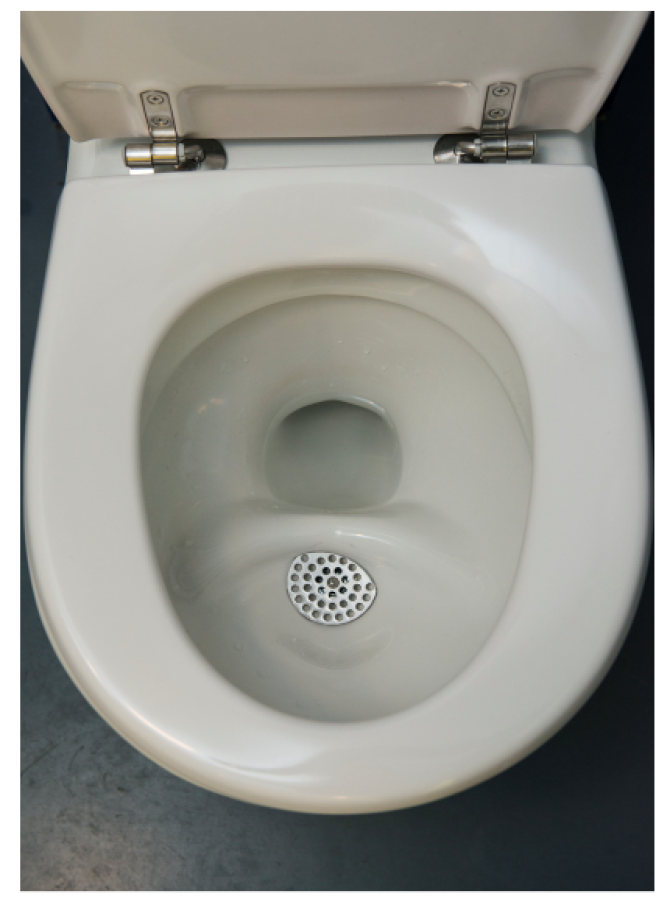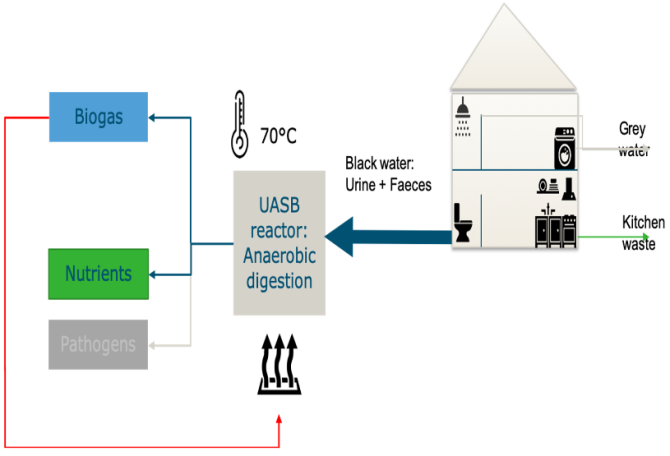
News
Science: Recovering nutrients from human toilet waste: producing pathogen-free phosphorous and nitrogen, while generating energy
As part of the EU-funded project Run4Life, ETE scientist Merijn Moerland is developing a method for efficient and hygienic nutrient recovery from toilet waste. To avoid the presence of human pathogens, allowing the nutrients to be applied as fertilizers for crops, the scientist is modifying existing wastewater cleaning processes to operate at higher temperatures.
Phosphorus (P) and nitrogen (N) are important nutrients for plant growth in agriculture. Because of a growing world population, demand for these fertilizers is increasing. However, a lot of N and P is lost, for example due to insufficient recovery: less than half of all phosphorous and only a few percent of nitrogen are recovered in current wastewater treatment plants. Since nutrient reserves are limiting, closing cycles by recovery and subsequent recycling is highly important to guarantee sufficient supply in the future. In addition, insufficient retrieval may result in discharge in surface waters, where they may cause eutrophication, resulting in massive algae blooms. This damages the ecosystem.
Highly diluted
Currently, a more efficient recovery of these nutrients is difficult due to their low concentrations in household wastewater. Relatively clean water from shower and kitchen (grey water) as well as more polluted and nutrient-rich toilet water (black water) is mixed, ending-up in the same sewage stream. ‘This results in highly diluted nutrients, that are more difficult to recover’, PhD scientist Merijn Moerland says. ‘To make this
process more efficient, a separate collection of relatively clean grey water,
from shower and kitchen, and toilet waste, black water, is needed, for example, using vacuum toilets.’ Grey water can be reused, for example as irrigation water, with relatively little treatment. Black water, however, contains large amounts of P and N, and has to be cleaned separately while recovering nutrients. On a yearly basis, about 4.5 kg of N and 0.5 kg of P can be recovered per person. But the presence of human pathogens, like viruses and bacteria, limits the use of these nutrients: they cannot be used as fertilizer for crops because of safety and health issues.

Vacuum toilet using about half a liter of water per flush, instead of six liters in conventional toilets
Generating energy
To make the N and P recovered safe for reintroduction in the food chain as
agricultural fertilizer, the pathogens have to be removed. To achieve this,
Moerland modified an existing biological process for black water cleaning: the well-known Upflow Anaerobic Sludge Blanket (UASB) reactor. ‘In a first step, microorganisms ferment the organic compounds into biogas. The absence of oxygen preserves the energy present’, he explains. ‘In this process, the nutrients become dissolved in the solution and can be recovered.’ However, to remove the pathogens present, the process has to be performed at a higher temperature of 55-70 °C. At these temperatures, pathogens are expected to be killed, but at the same time, it is challenging to find temperature-resistant bacteria, that can still ferment the organic compounds present at this higher temperature.

Schematic overview of separate collection and processing of black water. Anaerobic digestion at high temperatures kills human pathogens, while biogas is produced for heating the system.
Efficient nutrient recovery
To find the right temperature-resistant bacteria, Moerland collected sludge from running anaerobic reactors. This sludge usually contains many different species of bacteria. By running such a sludge sample in a reactor at 55 or 70 °C, only the heat-resistant bacteria survive. Eventually, by using this natural selection, he managed to collect the right bacteria for the process. During the next steps, the scientist tested the effectivity of the high temperature to kill the pathogens present, and to fine tune reactor conditions, like pH and flow rate. Finally, Moerland had to develop an efficient nutrient recovery technology. ‘One of the challenges is to have the chemistry for nutrient recovery working: black water contains a lot of solids and different components’, Moerland explains. ‘In this highly varied chemical mixture everything reacts together. It is therefore difficult to find the right chemistry to retrieve the nutrients present.’
As soon as the chemistry works, the next step is to design a system that is as simple and straightforward as possible and can easily be applied in a residential area. Moerland: ‘Preferably the whole process of biogas production and nutrient recovery should take place in a single reactor. To make the process as energy neutral as possible, the biogas formed can be used to heat the reactor.’
Real-life situation
Moerland is currently developing the high-temperature cleaning and nutrient recovery process in the laboratory using small, five-liter set-ups. Once the technical challenges have been solved, the next step is to test the concept in a real-life situation. ‘Together with water technology innovation company DeSah BV, we are planning to implement these high temperature reactors in an experimental residential area, consisting of 32 houses in Sneek’, Moerland says. ‘I expect that we can start large-scale testing within half a year.’ If the technology works out as expected, safe fertilizers can be recovered from human waste.
Selected publication
Bisschops I., Kjerstadius H., Meulman B., & van Eekert M. 2019. Integrated nutrient recovery from source-separated domestic wastewaters for application as fertilisers. Curr. Opinion Environ. Sust. 40: 7-13. https://doi.org/10.1016/j.cosust.2019.06.010